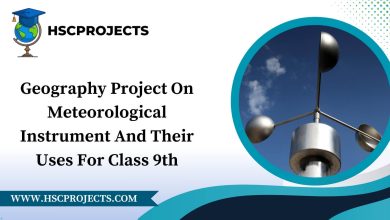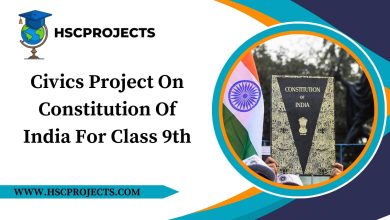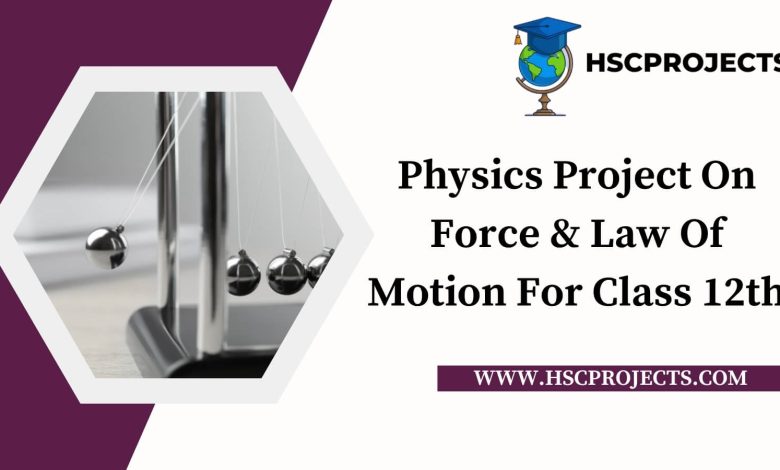
Physics Project On Force & Law Of Motion For Class 12th
Acknowledgment
Embarking on the journey to explore the realms of force and motion has been an enriching and insightful endeavor, and as we present this project, we extend our gratitude to those who have played pivotal roles in its realization.
First and foremost, we express our sincere appreciation to our esteemed physics teacher, [Teacher’s Name], whose guidance and encouragement have been instrumental in shaping our understanding of these fundamental principles. Your passion for the subject and unwavering support have ignited our curiosity and fueled our commitment to this project.
We extend our gratitude to our classmates who contributed to vibrant discussions, shared valuable insights, and provided a collaborative environment that enhanced the depth of our exploration. The exchange of ideas within the classroom setting has undeniably enriched the project’s scope and content.
Our heartfelt thanks go to [Name of Individuals or Organizations] for their generosity in providing access to resources, materials, and equipment essential for the practical experiments conducted as part of this project. Your support has allowed us to translate theoretical concepts into hands-on experiences, fostering a more profound understanding of force and motion.
Additionally, we acknowledge the authors of the textbooks, articles, and online resources that served as beacons of knowledge throughout our research. The wealth of information gleaned from these sources has been invaluable in constructing a comprehensive and well-informed project.
Finally, we express our gratitude to our families and friends for their unwavering support, understanding, and encouragement. Your belief in our abilities and your willingness to lend a helping hand have been a source of strength throughout this academic endeavor.
In essence, this project stands as a collective effort, and each individual mentioned has contributed significantly to its fruition. Your support has been the cornerstone upon which we built our exploration of force and motion, and for that, we extend our heartfelt thanks.
Thank you.
[Your Full Name][Your Class and Roll Number]
[Date]
Introduction
In the intricate tapestry of the physical world, the concepts of force and motion stand as pillars, shaping the very essence of how objects interact and navigate through space. The study of these fundamental principles is not merely an exploration of abstract theories; it is a profound journey into the mechanics that govern the universe. This project embarks on a comprehensive exploration of force and motion, delving into the historical evolution of these concepts, their mathematical foundations encapsulated by Newton’s Laws, and their diverse applications in the real world.
As we journey through the corridors of scientific discovery, we will unravel the rich history that led to our current understanding of force and motion. From the early musings of Aristotle to the groundbreaking experiments of Galileo Galilei, and culminating in the systematic framework established by Sir Isaac Newton, our exploration will underscore the evolution of thought that has brought us to this juncture.
Newton’s Laws of Motion, the cornerstone of classical mechanics, will take center stage in our investigation. We will delve into each law, deciphering their implications and exploring how they govern the behavior of objects in both everyday scenarios and the celestial realms. Through this journey, we will witness how these laws form the backbone of classical mechanics, providing a unified perspective on the interplay between force, mass, and acceleration.
Our exploration extends beyond theoretical understanding to practical applications. We will investigate various types of forces, both contact and action-at-a-distance, exploring their nuances and real-world implications. From the frictional forces that shape our daily movements to the gravitational forces that dictate the dance of celestial bodies, our project aims to bridge the gap between theory and application.
To ground our theoretical discussions, we will embark on hands-on experiments, verifying Newton’s Second Law and determining the coefficient of friction. Through these experiments, we aim to not only reinforce theoretical concepts but also provide a tangible understanding of the principles that govern force and motion.
In conclusion, our project seeks to demystify the complex world of force and motion, offering a comprehensive overview that extends beyond the confines of textbooks. By understanding these fundamental principles, we gain not only a deeper insight into the workings of the physical world but also a toolkit for analyzing and interpreting the myriad phenomena that surround us. Join us on this expedition as we unravel the intricate dance of force and motion, illuminating the paths paved by scientific inquiry and discovery.
Historical Overview
The development of the concept of force and motion has a rich history, from early observations to pivotal contributions by Galileo and Newton. Their work marks significant milestones in the evolution of ideas that have shaped our current understanding of force and motion.
Newton and Galileo, two luminaries in the field, made key contributions that laid the foundation for the laws and principles central to this project. Their insights propelled us into a new era of scientific understanding.
Fundamental Concepts
Newton’s Laws of Motion form the bedrock of our comprehension of force and motion. Each law, clearly stated, holds profound significance. Let’s explore these laws and their practical implications through examples and illustrations, making the theoretical tangible for the reader.
Types of Forces
There are different forces at play in the world around us. Contact forces, including normal, frictional, and tension forces, play a pivotal role in our daily experiences. Let’s delve into each of these forces, explaining them concisely and providing relatable examples for better comprehension.
Additionally, action-at-a-distance forces, such as gravitational and electromagnetic forces, operate in ways not immediately apparent. We’ll break down these forces into simple terms and illustrate how they influence everyday scenarios.
Applications of Newton’s Laws
Applying Newton’s Laws goes beyond theoretical exercises; they find practical use in understanding phenomena like projectile motion. By breaking down the concepts and offering real-life examples, we aim to make the application of these laws clear and accessible.
Circular motion, another intriguing aspect, involves centripetal force. We’ll define this force clearly and demonstrate its role in circular motion, relating it to real-world applications. Through these applications, we can appreciate the far-reaching impact of force and motion in our lives.
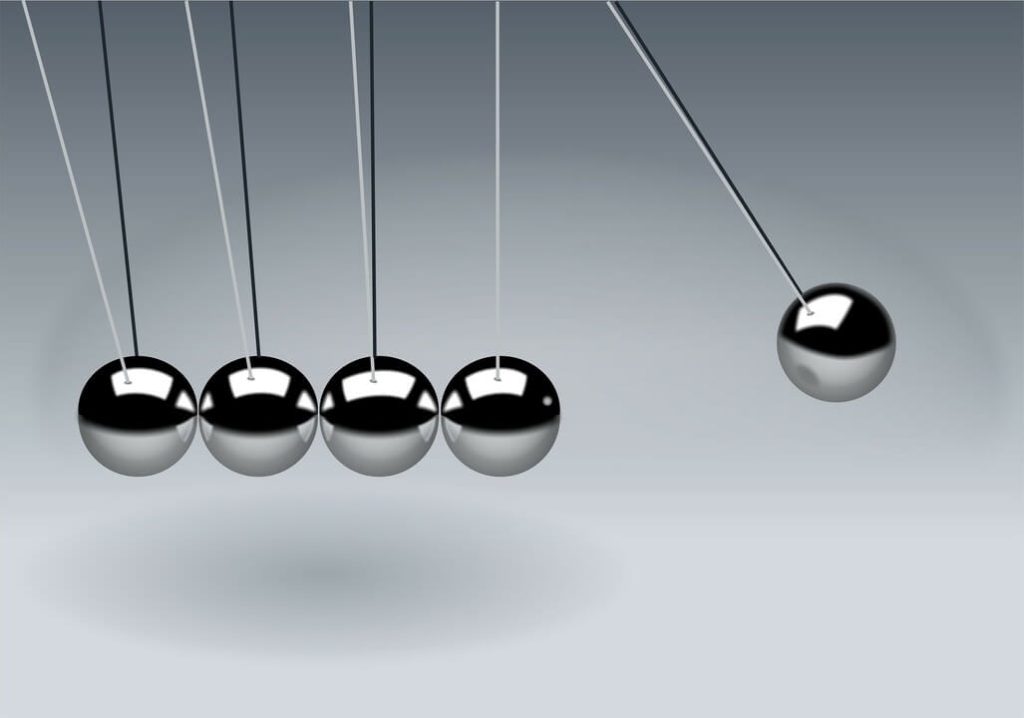
Practical Experiments
- A Determining the Coefficient of Friction: In this experiment, we’ll determine the coefficient of friction through a systematic step-by-step procedure. By carefully following each step, we aim to highlight the practical application of frictional forces and emphasize the significance of calculating the coefficient of friction in understanding surface interactions.
- Verifying Newton’s Second Law: Our experiment will involve a specific setup designed to verify Newton’s Second Law. Through this hands-on approach, we’ll underscore the importance of experimental validation in confirming theoretical predictions. This not only reinforces the concepts discussed but also provides a tangible link between theory and real-world observations.
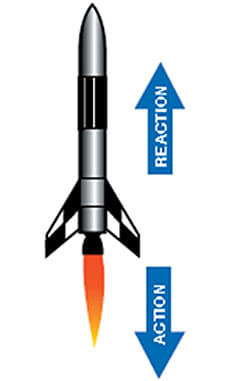
Visual Aids
To enhance understanding, we’ve incorporated clear and relevant visuals throughout the project. Graphs and diagrams are labeled appropriately, providing visual support for key points. This visual aid ensures that complex concepts are presented in an accessible manner.
Presentation
The presentation is organized logically, mirroring the sequence of the written project. To ensure clarity and confidence, thorough practice is essential. By presenting the material in a well-structured manner, we aim to engage our audience and convey the significance of force and motion in an accessible and compelling way.
Conclusion
As we bring our exploration of force and the laws of motion to a close, we reflect upon the profound journey through the intricate tapestry of classical mechanics. This project has sought to unravel the mysteries that govern the behavior of objects, from the minutest particles to the grandeur of celestial bodies, within the framework of force and motion.
Our journey began with a historical odyssey, tracing the evolution of thought from the early observations of Aristotle to the revolutionary experiments of Galileo Galilei and the systematic formulation by Sir Isaac Newton. The narrative of force and motion is not merely a chronicle of scientific progress; it is a testament to the persistent human curiosity that propels us to understand the very essence of our physical reality.
At the heart of our exploration lie Newton’s Laws of Motion, the elegant principles that unify the diverse phenomena of motion under a concise and comprehensive framework. Through the lens of these laws, we have witnessed the intricate dance between force, mass, and acceleration, providing a roadmap for predicting and understanding the motion of objects.
Our exploration extended beyond theoretical discussions to the practical realm, where experiments served as the crucible for testing and reinforcing these principles. From determining the coefficient of friction to verifying Newton’s Second Law, these hands-on experiences have not only validated theoretical concepts but have also brought them to life, making the abstract tangible and fostering a deeper understanding.
Delving into the myriad types of forces, both contact and action-at-a-distance, has illuminated the pervasive influence of these interactions in our everyday lives. Whether it be the friction that opposes our movements or the gravitational forces that shape the cosmos, we have come to appreciate the universality and diversity of forces at play.
In the broader context, this project serves as a testament to the interdisciplinary nature of physics. Force and motion are not confined to the realm of theoretical equations but manifest themselves in every facet of our existence. From the intricate patterns of a simple pendulum to the complexities of projectile motion, these principles permeate our surroundings, offering a lens through which we can comprehend the physical world.
In conclusion, the journey through force and motion has been one of discovery, curiosity, and awe. It is an acknowledgment of the forces that shape our world and the laws that govern its motion. As we close this chapter, we carry with us a profound appreciation for the beauty and precision with which the universe unfolds, guided by the timeless principles encapsulated in the laws of motion.
Our exploration does not end here; rather, it serves as a stepping stone for future inquiries and deeper understanding. The dance of force and motion continues, an eternal symphony that resonates throughout the cosmos, inviting us to unravel its intricacies with each passing question and experiment.
May our exploration inspire others to delve into the wonders of force and motion, fostering a perpetual cycle of inquiry and discovery.
[Your Full Name][Your Class and Roll Number]
[Date]
Bibliography
- OpenStax. (n.d.). Physics. OpenStax CNX. https://cnx.org/contents/[email protected]
- Khan Academy. (n.d.). Physics. https://www.khanacademy.org/science/physics
- HyperPhysics. (n.d.). Georgia State University. http://hyperphysics.phy-astr.gsu.edu/hbase/hframe.html
- Interactive Simulations. (n.d.). University of Colorado Boulder. https://phet.colorado.edu/
- NASA. (n.d.). National Aeronautics and Space Administration. https://www.nasa.gov/
- Physics Classroom. (n.d.). https://www.physicsclassroom.com/
- MIT OpenCourseWare. (n.d.). Physics. https://ocw.mit.edu/courses/physics/
- Coursera. (n.d.). Physics Courses. https://www.coursera.org/courses?query=physics
- The Physics Hypertextbook. (n.d.). https://physics.info/
- Brightstorm. (n.d.). Physics Topics. https://www.brightstorm.com/science/physics/
- Physclips. (n.d.). Multimedia Education in Physics. http://www.animations.physics.unsw.edu.au/
Certificate of Completion
[Student’s Name][Class/Grade Level]This is to certify that I, [Student’s Name], a [Class/Grade Level] student, have successfully completed the “Physics project on force & law of motion for class 12th.” The project explores the fundamental principles and key aspects of the chosen topic, providing a comprehensive understanding of its significance and implications.
In this project, I delved into in-depth research and analysis, investigating various facets and relevant theories related to the chosen topic. I demonstrated dedication, diligence, and a high level of sincerity throughout the project’s completion.
Key Achievements:
Thoroughly researched and analyzed Project on Physics project on force & law of motion for class 12th.
Examined the historical background and evolution of the subject matter.
Explored the contributions of notable figures in the field.
Investigated the key theories and principles associated with the topic.
Discussed practical applications and real-world implications.
Considered critical viewpoints and alternative theories, fostering a well-rounded understanding.
This project has significantly enhanced my knowledge and critical thinking skills in the chosen field of study. It reflects my commitment to academic excellence and the pursuit of knowledge.
Date: [Date of Completion]Signature: [Your Signature] [School/Institution Name][Teacher’s/Examiner’s Name and Signature]
In order to download the PDF, You must follow on Youtube. Once done, Click on Submit
Follow On YoutubeSubscribed? Click on Confirm
Download Physics Project On Force & Law Of Motion For Class 12th PDF





